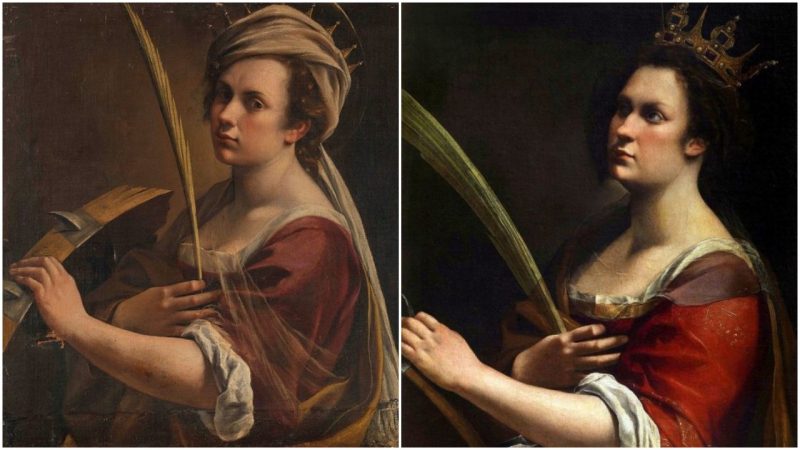A centuries-old puzzle of the art world has been solved, thanks to a team in Italy. Experts working at the Uffizi Galleries in Florence examined a painting by 17th-century artist Artemisia Gentileschi, namely Saint Catherine of Alexandria (1619).
It bore a striking similarity to an earlier self-portrait but up till now, no official connection had been made between the two works. Smithsonian.com reports that “Both depict regal, dark-haired women clad in red, clasping the saint’s characteristic broken torture wheel while holding a martyr’s palm close to the chest.”
The team from Opificio Delle Pietre Dure — or “Workshop of semi-precious stones” — were supervised by Cecilia Frosinini and led by Maria Luisa Reginella and Roberto Bellucci. They have discovered that the 1619 piece is, in modern parlance, a “mash-up”.
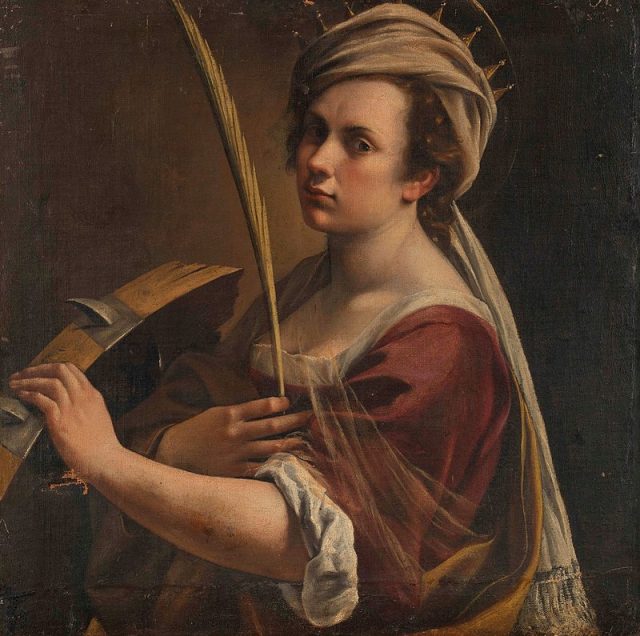
Using tests such as ultraviolet imaging, and taking great care not to damage the artwork, their investigations turned up a painting within a painting. Under Saint Catherine’s layers is another rendering, this one in line with the self-portrait Gentileschi created between 1615 – 17. It’s believed this was done by the Baroque artist to save materials. Further evidence of possible recycling lies in what’s been described as a “mysterious little face” visible on the prototype’s visage.
The underpainting is seen as proof that one work flowed into the other. As reported by the Washington Post, “the examination strongly indicates that to realize her vision of the saint, the painter combined details from the self-portrait with ones from a portrait of a noblewoman, the Grand Duke Ferdinando de’ Medici’s daughter Caterina.”
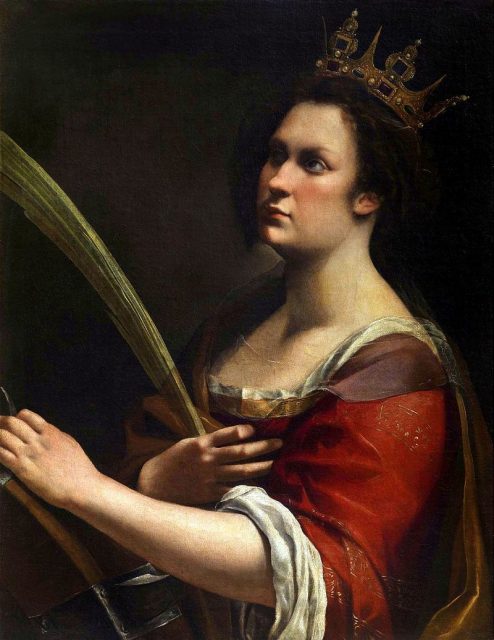
A torture wheel is present in the painting because of the legend of Saint Catherine. She became a Christian in Alexandria, causing outrage around the year 300. She was tortured using a breaking wheel but this apparently was destroyed by an angel. Catherine was then beheaded.
The name “Catherine wheel” has its origins in this episode. During her considerable ordeal, Catherine would look up towards Heaven, a detail depicted in the piece. However, the 1615-17 self-portrait, housed at London’s National Gallery, shows the artist looking at the viewer and also wearing a turban over the crown on show in its successor. These features are also seen on the underpainting.
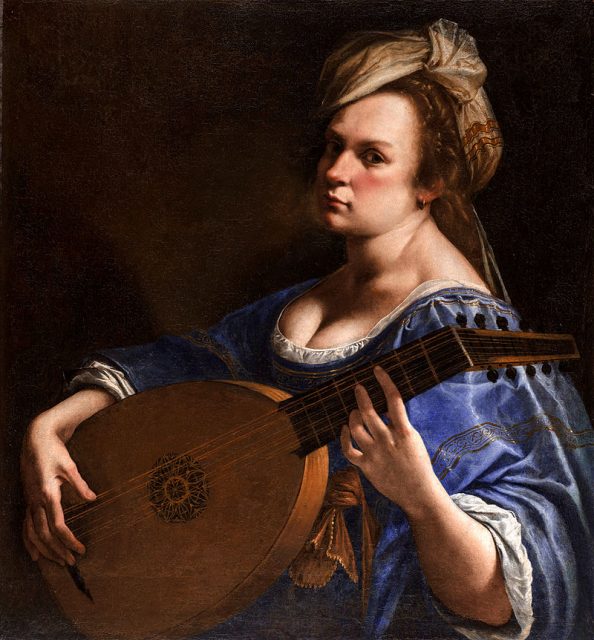
As for why the turban was replaced by a crown, Italian news source L’Indro comments that it “could be that of a tribute by the artist to the Grand Dukes of Tuscany, then the painting would have been transformed according to a precise request of the same: to dedicate it to his daughter.” If the discovery proves anything it’s that Gentileschi’s work was a constantly evolving process.
https://youtu.be/dIVeiG8QXVo
As a woman artist painting strong female images, she was highly unusual at the time and suffered her own traumas.The daughter of Orazio Gentileschi, and part of a generation influenced by Caravaggio, she was according to the National Gallery website, “raped by the painter Agostino Tassi, an acquaintance and collaborator of her father’s.”
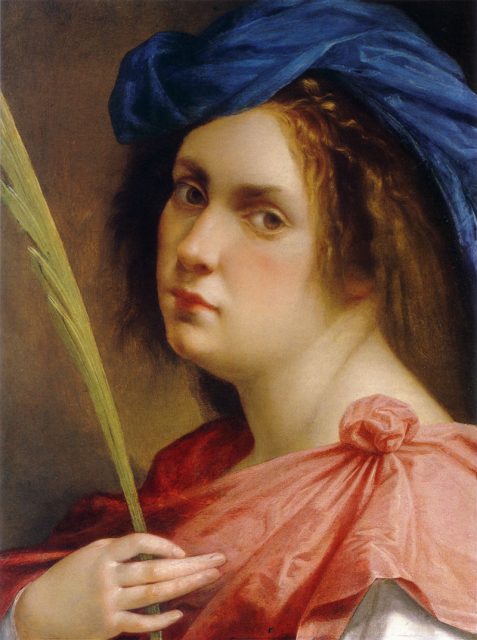
Despite a trial, Tassi escaped punishment. Gentileschi went on to achieve great things, “becoming the first woman to gain membership to the Academy of the Arts of Drawing in 1616.” It is thought she used herself as the basis for her portraits. L’Indro is keen to point out the significance of the month in which the find was made.
It writes, “On 8 March, Women’s Day, the figure of Artemisia Gentileschi, one of the most famous painters of art history, who has become a symbol of the fight against violence against women, invariably returns to the political and social scene.” It goes to show that the most fascinating historical discoveries can be made away from burial sites and sometimes in the unlikeliest places… often in plain sight.
